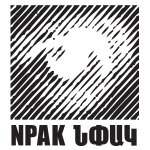POST FACTUM AN INTER – CULTURAL SPACE
Each year the Venice Biennale becomes the axis from which artists from across the globe engage us in a cultural experience. It is here at the Biennale that artists and their art open for us an opportunity to see diversities, as well as the similarities, within the global cultural community.
It is natural for the viewers to compare the artistic pieces-to attempt to ferret out a common thread that ties all the works together. Hence one can easily fall into making simple and direct comparisons based on external factors. This is what has been common place throughout the history of art. Here at the Venice Biennale one has the opportunity to view and compare works of art on the basis of their essence and the content of their message.
Signs and symbols, which are vital in serving as a vehicle for conveying subconscious ideas, are what we typically regard in artwork. When we compare artwork we need to be aware that we are making comparisons at only one level. Certainly this level is important and rich in diversity, it is a level at which we come to an understanding of man’s spirituality, discover new meanings and enjoy the breadth of art. A level vital for the arts. But it does not reveal everything. Dangers lurk this level. One of the greatest dangers of viewing art as merely a collection of signs and symbols is that it leads to comparisons. Comparisons in turn can to superficial understanding. There can be an unlimited number of comparisons made for each piece of artwork. Further, comparisons can easily lead us astray, lose meaningful interpretation and fall short of providing us with a deeper understanding of art. In fact, comparisons hold little ultimate value, cloud possible understanding and can lead to a chaos of interpretations. As the saying goes, “A pimple may be compared with Mount Everest, and a berry with one’s uncle”. There is, however, another possible system to be used in comparisons. In such a system meaning is derived from function and the internal relation of elements in the object. In using such a system one passes through similarities and diversities and gains new understanding. New ideas, motifs and relations are illuminated by the common thread that runs through the pieces, through function and internal relation holds a great potential for understanding. Narek Avetissian’s “Post-Factum” reflects the general tendencies in contemporary art. He uses a sign system to engage his audience. His sign system is significant, in part, because it reflects contemporary trends of understanding of the human mind. But too, his sign system retains elements of a spiritual element within humans. Universal and encompassing, Narek Avetissian’s project is at once personal and global. Too, he has created a work that is both an art piece and a non-art piece. A non-art piece because he wishes to leave behind the traditional methods of artistic expression. He seeks to emancipate imagination-most specifically his imagination. In Post-Factum he presents the viewer with a number of possible options, some limited combinations, all created out of many elements. By selecting from possible combinations of objects, Avetissian is recreating images, both real and potential, that exist in the universe. Post-Factum shakes the foundations of traditional iconography. His imaging becomes more accidental because it is influenced by internal vision. Ideas and images are repeated. In his work we witness a broad chasm between motif and meaning. There is this inclination of violating and crossing borders in all of Narek Avetissian’s works. Post-Factum is only one expression of this tendency. In using different techniques he creates a consistency in his overall artistic tendencies. The idea of “two infinities” is presented in Post-Factum. The first infinity is of unending disruptions; the other infinity is one of continuity. We witness the artist’s quest for the entire human race between these two poles. Every personality is embraced in this overall movement, where everyone, without relinquishing his or her identity, is part of the dynamic and developing whole-a collective passion.
Post-Factum moves through enormous depths. From semi-dark spaces emerge and take form multi-faceted personalities. What we see are the formation of new personalities. Post-Factum deals with the universalization of man as a perpetual process .the indestructibility of eternity is considered. A vision of perpetuity emerges. Infinities become evidence that -in the future—they are equal, or -in the past-one is larger than the other. Avetissian give us a possible answer : perpetuity is eternal and eternities are equal perpetuities. Eternity, leaving behind its dissolving past, constantly unfolds before us a world of possibilities , but leaves behind nothing.
No matter how private post-Factum may be, what emerges is only a fragment of a bigger concept. This project, being experienced simultaneously in Venice, as well as in Armenia, is also extending, expanding and changing as it moves toward the edge of the universe. It is one step towards the summit of the absolute.
Stepan Veranian Curator











